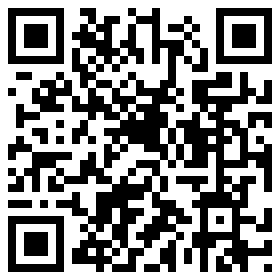One of the latest technological
advances sweeping the nation is the QR, or Quick Response, Code. The QR, which
is a type of barcode, was developed by a Japanese subsidiary of Toyota in 1994
to track vehicles during the manufacturing process. When Steve Jobs and company
reinvented the cell phone by turning it into the smartphone, he, in turn,
created a way to deliver QR technology to the masses. When accessed through any number of free apps available for download
on your smartphone or tablet device with a camera, a QR code takes you to a Web
page where you'll find targeted, up-to-date information and promotional content.
With my iPhone, it’s as easy as taking a picture.
The QR is everywhere these days. You
may have noticed these symbols showing up in magazine ads, posters, storefront
window displays, TV advertisements, business cards, Web sites and even on
T-shirts. They’re also showing up in racing.
In August, Equibase announced that QR Codes would be
included on racetrack program past performance pages. Most tracks are now using
them to provide links to time-sensitive information like scratches and other
changes before a race—and results, charts and video race replays after the race
is official.
Adding a modern twist to the NTRA’s
highly successful National Mystery Mutuel Voucher (MMV) direct mail promotion, Breeders’
Cup recently announced a $500,000 MMV promotion using QR Codes in
lieu of more expensive home mail delivery.
And just last week, I received a
copy of the Fasig-Tipton
November Sale catalogue, which features QR Codes on each catalogue page.
The Fasig-Tipton sale is no ordinary
horse sale to be sure. It’s a small, “boutique” sale—similar to the Saratoga
Select Yearling Sale—featuring  many
of the elite broodmares, broodmare prospects, racing/broodmare prospects,
horses of racing age and weanlings that will be offered at auction in North
America.
many
of the elite broodmares, broodmare prospects, racing/broodmare prospects,
horses of racing age and weanlings that will be offered at auction in North
America.
The
many accomplishments of these top prospects go well beyond what can be included
in a traditional sales catalogue page. (In fact, the print edition of this
year’s Fasig-Tipton catalogue is much larger than a standard horse sale
catalogue. It’s also printed in color and includes a color photo with captions
for each horse in the sale.)
As
with any sales catalogue, there was a printing deadline for the Fasig-Tipton
November Sales catalogue to accommodate a suitable delivery date to buyers
located all over the world. And just like a newspaper or racetrack
program, the printed version of a catalogue becomes an almost instantly dated
item the minute it is approved for printing.
Fasig-Tipton’s
response to this problem was the addition of QR Codes, which drive users to Web
pages that include up-to-date information for each horse in the
catalogue. Fasig-Tipton is the first auction house to utilize QR Codes,
but you can be sure the practice will spread. Information accessed through the
QR Codes includes full pedigrees, important updates, consignor information,
video race replays, past performances, media coverage and more. Click here for an example of what you see
if you scan the QR Code for Pachattack, Hip #6.
Consignors also can
link directly to these same Fasig-Tipton developed Web pages through their
other forms of Internet-based advertising. Some of the horses for sale at
Fasig-Tipton November have Facebook pages with thousands of followers. These,
too, can be accessed directly through the QR Codes.
QR Codes are only the
latest method utilized by Fasig-Tipton and other sales companies to promote
horses and provide information to buyers. Prior to the QR Code, there were
direct mailers of printed materials as well as VHS tapes (remember those?),
CDs, DVDs, Thumb drives, et al. Today, with more and more marketing moving to
the Web, Fasig’s move makes perfect sense.
I
encourage you to download a QR Code app and check out the way Fasig-Tipton and
others in our industry are transforming Thoroughbred racing through the use of
technology. It makes me wonder what else is around the corner.
How
else would QR Codes help market racing and wagering? Let me hear some of your
ideas.





